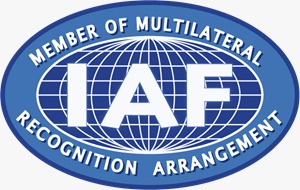Outsource your P&C Software to Expert Developers
Introduction
Property/casualty insurance can be countermined into two major categories: commercial lines and personal lines. Personal lines, as the term suggests, includes coverages for individuals- vehicles and household insurance. Commercial lines, that accounts for almost half of U.S. property/casualty insurance premium, includes the many kinds of insurance products designed for businesses.
Commercial and business insurance performs a vital role in the world economy. Without it, the economy would not function properly. Insurers primarily protect the economic system from failure by considering the risks intrinsic in the production of goods and services.
In the US itself, there are over seven million small businesses, ranging from grocery stores to construction firms to home-based businesses. All have one thing in relation: Without the appropriate insurance coverage, each could be wiped out by a lawsuit or a disaster. In addition, the majority of businesses are liable for the safety of their workers and bear responsibility for injuries sustained during the job.
Difference Between Personal Lines and Commercial Lines in Insurance
In the past, as we all know, everyone had a local representative from insurance firms who they consulted at renewal, brought payments to, and even visited when they had a claim. Now, many people receive paperless renewals, have their payments automatically drafted, and call a number to report a claim. A number of people are purchasing their vehicle or property policies online through a website, but the insurance industry hasn’t advanced to offering these options for all but the most simple business risks. Businesses consider the service agents provide and are actively looking for agents who will render knowledge and direction in preserving one of their biggest assets.
This creates a tremendous opportunity for agents. However, if an agency has been targeted on personal lines insurance, transitioning to a commercial lines target may be intimidating. For the next few sessions, in commercial lines focus may be intimidating. In this blog, we will discuss some key distinctions between the commercial insurance consumer and the personal lines consumer, and we will discuss the effects this can have on the selling and underwriting processes.
1. Named Insureds: On a personal lines policy, the Named Insured will be an individual or a married couple. For the business policy, there are a variety of entity types (sole proprietor, partnership, limited liability corporation, corporation, etc) that could be listed as the Named Insured. Depending on the ownership structure, there may be multiple Named Insureds on a single policy. Understanding how different objects are set up is the key to understand who the policy is guarding and how to frontline support the account.
2. Property Concerns: When drafting property coverage for personal lines customers, agents are typically looking to cover homes and their contents. Property coverage for commercial purchasers can cover a myriad of different building types like offices, storefronts, warehouses, etc. Contents coverage may cover any number of items, such as inventory, furniture, the property of the business customers, and/or machinery.
3. Liability Concerns: Commercial customers will have broader matters than personal lines consumers. Underwriters investigate four different obligation vulnerabilities: premises, operations, products, and completed operations, while personal lines consumers primarily have only a property exposure. If a claim emerges particularly due to the condition of the property, it is known as property exposure. If a claim arises in the process of the work the insured performs, it is known as operations exposure. If a claim arises due to the products that the insured sells, it is known as product exposure. If a claim arises due to the work the insured performs after it is completed, it is known as completed operations. Because businesses can have different operations, it is important to understand which type of liability poses the most risk and would likely lead to a higher probability of claims.
4. Auto Insurance Concerns: Businesses have many diverse requirements when it comes to auto insurance. It is necessary to understand who the drivers are and what the vehicles are utilized for. While these are principles that apply when writing personal lines insurance, the variance in vehicles and uses is much greater on an auto insurance policy. Further, there are usually additional controls that apply to commercial risks. Drivers may be asked to have appropriate driver’s licenses depending on the size of the vehicles and drawing certain products will require financial documentation that will be new to the personal lines agent.
5. Policy Forms: Ultimately, one of the grounds that personal lines insurance has become so commoditized, other than the similarities between the insureds, is the similarities between different insurer’s forms. Commercial policy and endorsement forms can differ drastically from one carrier to another, and in many cases, insurers will manuscript endorsements to create coverage specific to an individual insured’s needs. Agents will need to understand the advantages that the forms they are selling offer to the insured, Independent agents, in particular, ought to familiarize themselves with the differences between the carriers that they write for and be cognizant of which company would be the best fit for each account in regards to coverage.







Leave A Comment